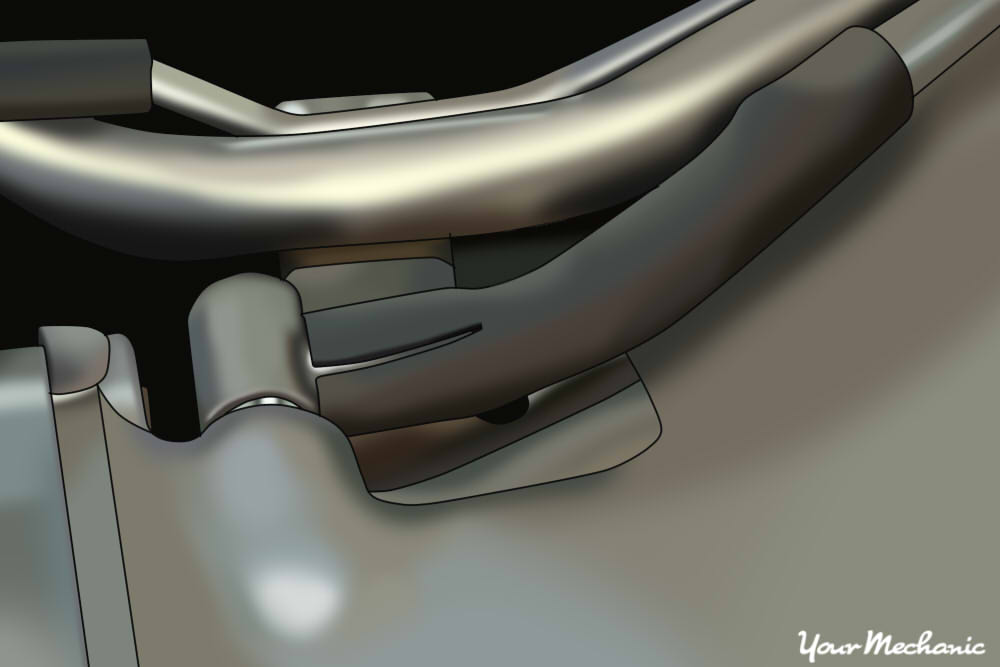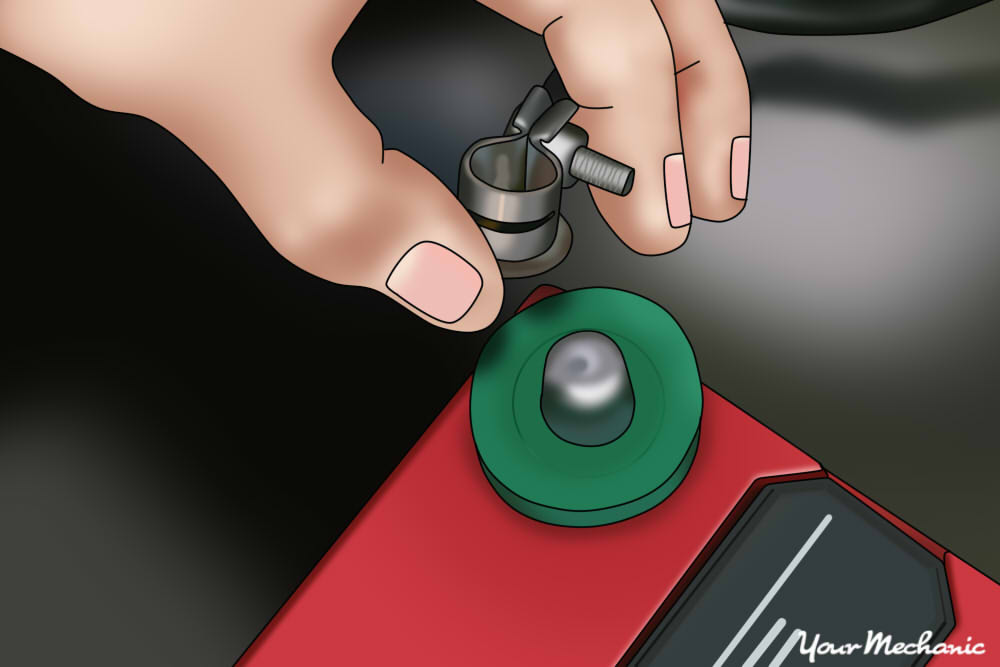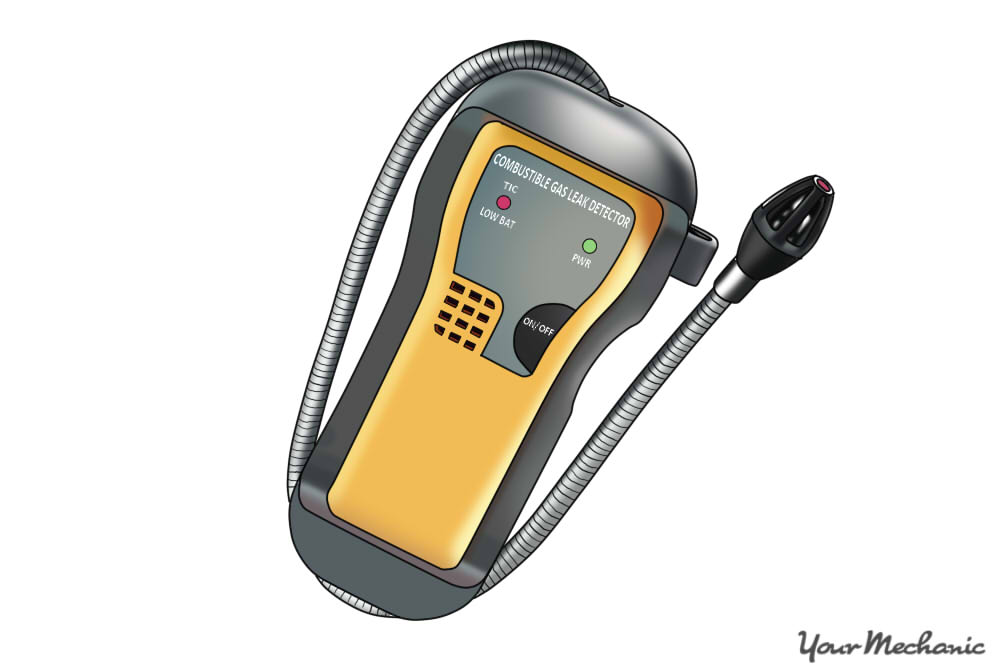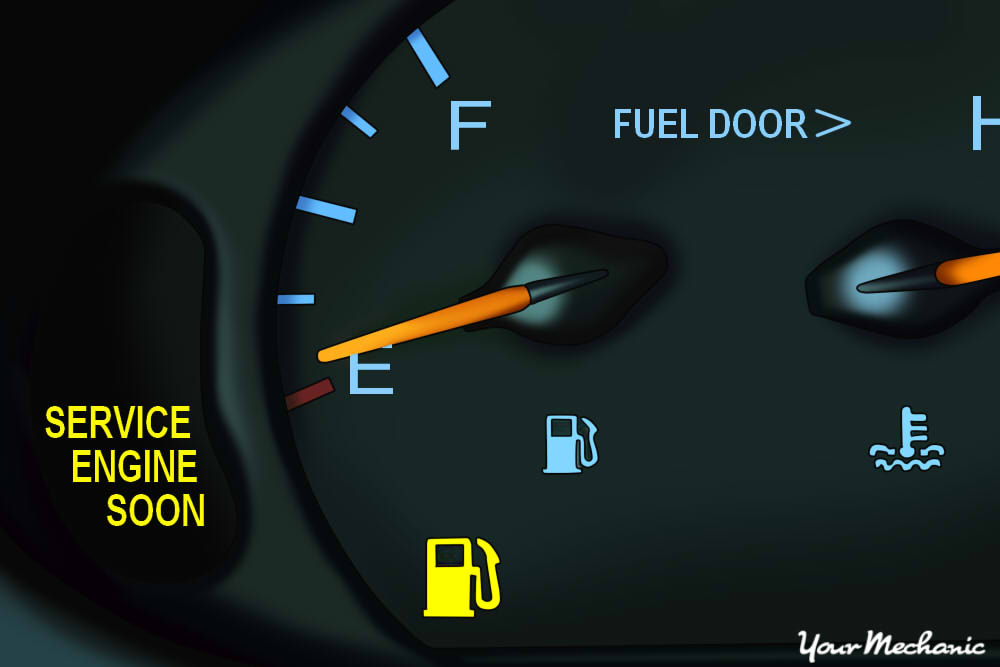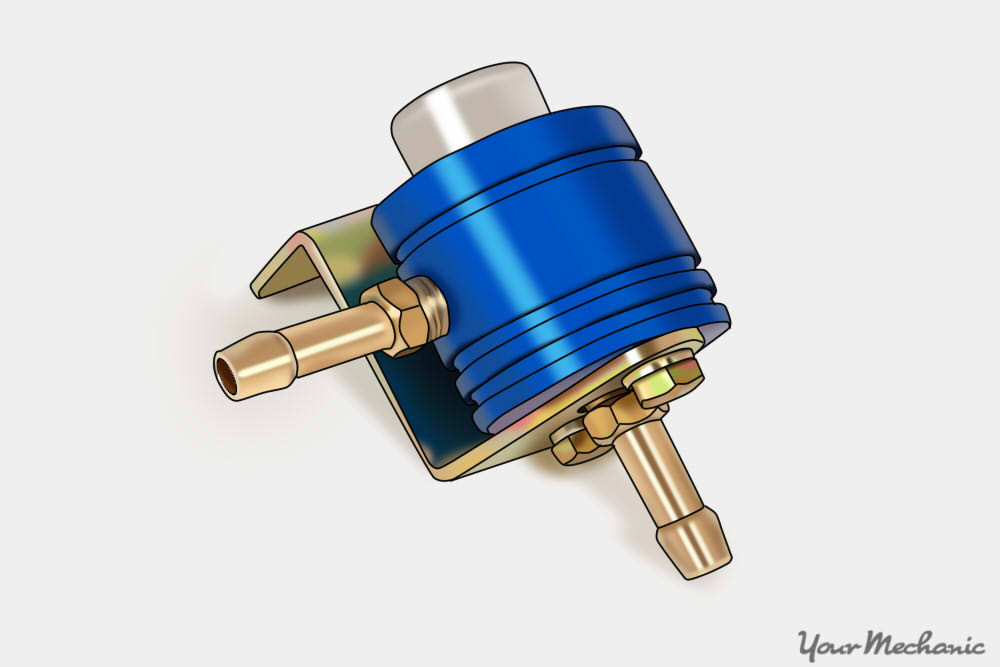

The fuel pressure regulator is a device designed to maintain a constant fuel pressure for proper fuel atomization.
Inside the regulator housing there is a spring pushing against a diaphragm. The spring pressure has been pre-set by the manufacturer for the desired fuel pressure. This allows the fuel pump to pump enough fuel and enough pressure at the same time to overcome the spring pressure. The extra fuel that is not needed is sent back to the fuel tank through the fuel return line.
When the vehicle engine is at idle, there is less pressure against the fuel coming inside the regulator. This is done by engine vacuum pulling on a diaphragm inside the fuel pressure regulator collapsing the spring. When the throttle is open, the vacuum drops and allows the spring to push the diaphragm out, making the fuel rail have high fuel pressure.
The fuel pressure regulator works with the fuel rail sensor. As the pump supplies the fuel, the fuel rail sensor senses that there is fuel. The fuel pressure regulator makes sure that there is constant pressure on the fuel rail to supply fuel to the injectors for proper atomization.
When a fuel pressure regulator begins to malfunction, there are some primary symptoms that will show up and alert the vehicle owner that there is something wrong.
A vehicle will begin to have a difficult start up, making the starter engaged for longer time than normal. In addition, the engine may begin to operate erratically. There may even be instances where problems with a fuel rail pressure sensor will lead to an engine simply cutting out during normal operation.
The engine light codes related to the fuel pressure regulator on vehicles with computers are:
Part 1 of 6: Check the condition of the fuel pressure regulator
Step 1: Start the engine. Check the dash for any engine light. Listen to the engine operation for the sound of any cylinders not firing correctly. Feel for any vibrations during engine operation.
- Note: If the fuel pressure regulator has completely failed, the engine may not start. Do not attempt to crank the starter more than five times or the battery will lower in performance.
Step 2: Check the vacuum hoses. Shut the engine off and open the hood. Check for any vacuum hoses that may be broken or damaged around the fuel pressure regulator.
Broken vacuum hoses can cause the regulator to not function and make the engine have a rough idle.
Part 2 of 6: Prepare to replace the fuel pressure regulator
Having all of the necessary tools and materials prior to starting the work will allow you to get the job done more efficiently.
Materials Needed
- Allen wrench set
- Boxed end wrenches
- Combustible gas detector
- Electrical cleaner
- Fuel hose quick disconnect kit
- Fuel resistant gloves
- Lint free cloth
- Protective clothing
- Ratchet w/metric and standard sockets
- Safety glasses
- Small flat tip screwdriver
- Torque wrench
- Torques bit set
- Wheel chocks
Step 1: Park your vehicle on a flat, hard surface. Make sure that the transmission is in park (for automatics) or in 1st gear (for manuals).
Step 2: Secure the front tires. Place wheel chocks around the tires that will be remaining on the ground. In this case, the wheel chocks will be around the front tires since the rear of the vehicle will be lifted up. Engage the parking brake to lock the rear tires from moving.
Step 3: Install a nine volt battery saver into your cigarette lighter. This will keep your computer live and keep your setting current in the vehicle. If you do not have a nine volt battery saver, you can skip this step.
Step 4: Disconnect the battery. Open the vehicle’s hood to disconnect your battery. Take the ground cable off the battery’s negative post to disable the power going to the fuel pump.
Note: It is important to protect your hands. Make sure to put on protective gloves prior to removing any battery terminals.
Tip: It is best to follow the vehicles owners manual for proper battery cable removal.
Part 3 of 6: Remove the fuel pressure sensor
Step 1: Remove the engine cover. Remove the cover from the top of the engine. Remove any brackets that may be in the way of the fuel pressure regulator.
- Note: If your engine has an intake on the engine that is transverse mounted or overlaps the fuel pressure regulator, you must remove the intake before removing the fuel pressure regulator.
Step 2: Find the schrader valve, or test port, on the fuel rail. Put on safety glasses and protective clothing. Place a small drip pan under the rail and place a towel over the port. Using a small flat screwdriver, open the valve by pushing on the schrader valve. This will bleed off the pressure in the fuel rail.
- Note: If you do have a test port or a schrader valve, then you will need to remove the supply fuel hose to the fuel rail. When doing so, you will need a drip pan under the fuel rail supply hose and a fuel hose quick disconnect tool kit. Use the proper fuel hose quick disconnect tool to remove the fuel hose from the fuel rail. This will release the pressure on the fuel rail.
Step 3: Remove the vacuum line from the fuel pressure regulator. Remove the mounting hardware from the fuel pressure regulator. Take the fuel pressure regulator off the fuel rail.
Step 4: Clean the fuel rail with a lint free cloth. Check the condition of the vacuum hose from the engine manifold to the fuel pressure regulator.
- Note: Replace the vacuum hose from the engine intake manifold to the fuel pressure regulator if it is cracked, or has any holes in it.
Part 4 of 6: Install the new fuel pressure regulator
Step 1: Install the new fuel pressure regulator onto the fuel rail. Screw in the mounting hardware finger tight. Tighten up the mounting hardware to 12 inch pounds then a 1/8 turn. This will secure the fuel pressure regulator to the fuel rail.
Step 2: Put on the vacuum hose to the fuel pressure regulator. Install any brackets that you had to remove to get the old regulator off. Also install the intake if you had to remove it. Be sure to use new gaskets or o-rings to seal the intake to the engine.
- Note: If you had to remove the pressure fuel line to the fuel rail, be sure to connect the hose back onto the fuel rail.
Step 3: Put back the engine cover. Install the engine cover by snapping it back into place.
Part 5 of 6: Check for leaks
Step 1: Reconnect the battery. Open the vehicle’s hood. Reconnect the ground cable back onto the battery’s negative post.
Remove the nine volt battery saver from the cigarette lighter.
Tighten up the battery clamp to ensure that the connection is good.
- Note: If you did not use a nine volt battery saver, you will have to reset all of the settings in your vehicle, like your radio, electric seats, and electric mirrors.
Step 2: Remove the wheel chocks. Remove the wheel chocks from the rear wheels and put them aside.
Step 3: Turn the ignition key on. Listen for the fuel pump to activate. Turn off the Ignition after the fuel pump stops making noise.
- Note: You will need to cycle the ignition key on and off 3 to 4 time to ensure all the fuel rail is full of fuel and pressurized.
Step 4: Check for leaks. Use a combustible gas detector and check all of the connections for any leaks. Sniff the air for any fuel odors.
Part 6 of 6: Test drive the vehicle
Step 1: Drive the vehicle around the block. During the test, listen for any engine cylinder not firing correctly and feel for any odd vibrations.
Step 2: Check for dashboard warning lights. Monitor the dash for the fuel level and for any engine light to appear.
If the engine light comes on even after replacing the fuel pressure regulator, then further diagnosis of the fuel system may be required. This issue may be due to a possible electrical issue within the fuel system.
If the problem persists, get a certified technician, such as one from YourMechanic, to inspect the fuel pressure regulator and diagnose the problem.





